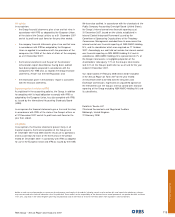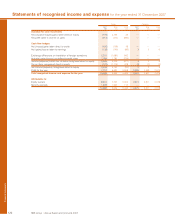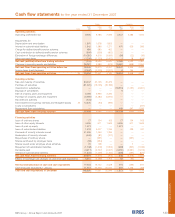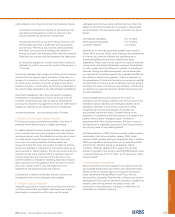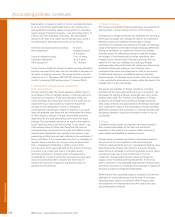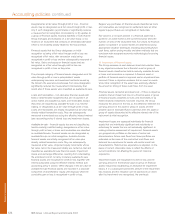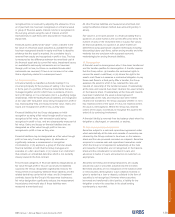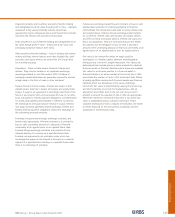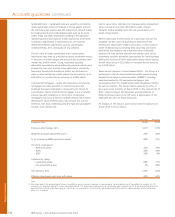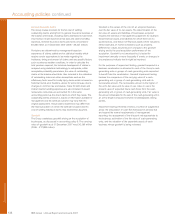RBS 2007 Annual Report Download - page 131
Download and view the complete annual report
Please find page 131 of the 2007 RBS annual report below. You can navigate through the pages in the report by either clicking on the pages listed below, or by using the keyword search tool below to find specific information within the annual report.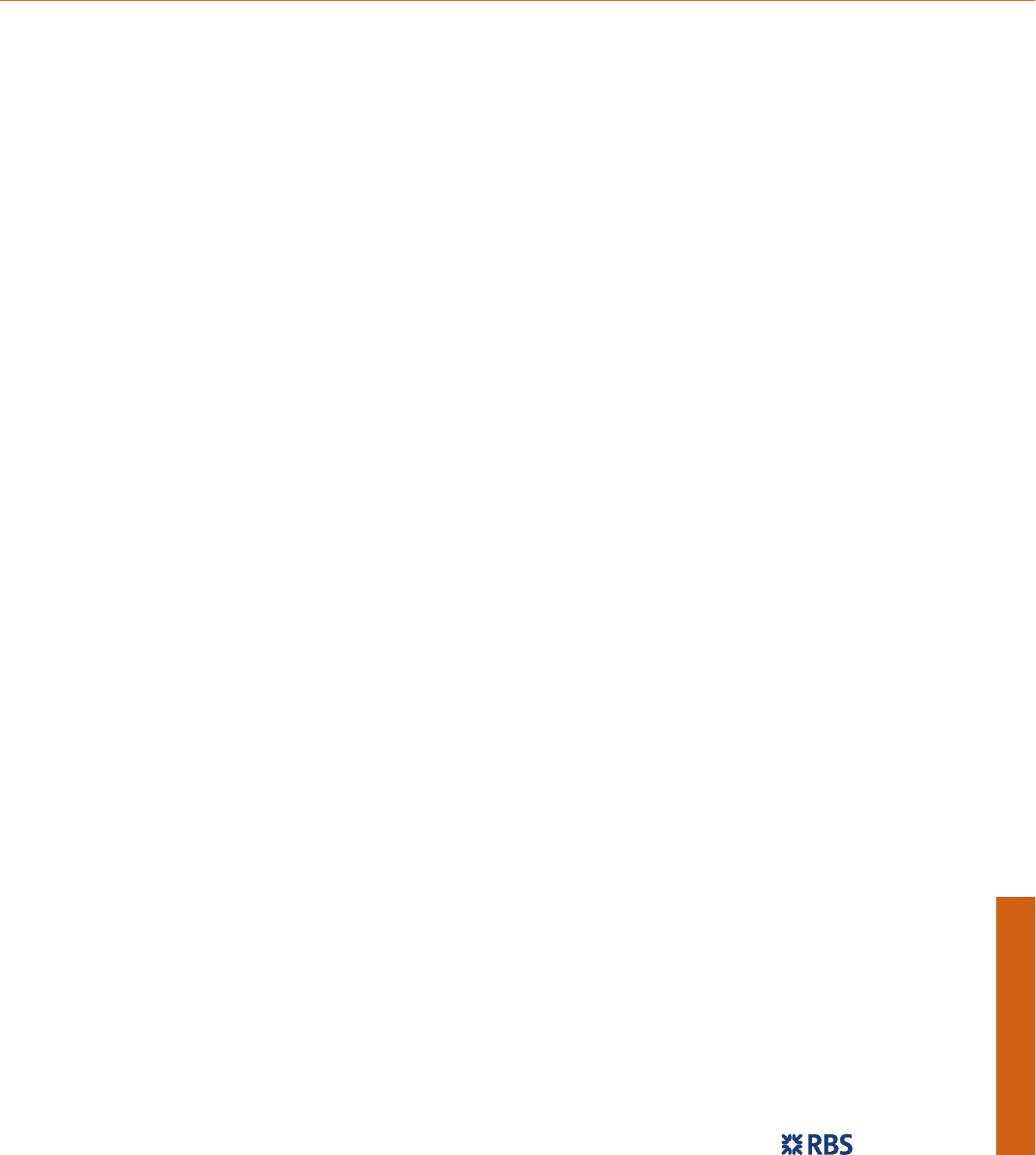
129
RBS Group • Annual Report and Accounts 2007
Financial statements
recognised loss is reversed by adjusting the allowance. Once
an impairment loss has been recognised on a financial asset
or group of financial assets, interest income is recognised on
the carrying amount using the rate of interest at which
estimated future cash flows were discounted in measuring
impairment.
Financial assets carried at fair value – when a decline in the
fair value of a financial asset classified as available-for-sale
has been recognised directly in equity and there is objective
evidence that the asset is impaired, the cumulative loss is
removed from equity and recognised in profit or loss. The loss
is measured as the difference between the amortised cost of
the financial asset and its current fair value. Impairment losses
on available-for-sale equity instruments are not reversed
through profit or loss, but those on available-for-sale debt
instruments are reversed, if there is an increase in fair value
that is objectively related to a subsequent event.
14. Financial liabilities
A financial liability is classified as held-for-trading if it is
incurred principally for the purpose of selling in the near term,
or forms part of a portfolio of financial instruments that are
managed together and for which there is evidence of short-
term profit taking, or it is a derivative (not in a qualifying hedge
relationship). Held-for-trading financial liabilities are recognised
at fair value with transaction costs being recognised in profit or
loss. Subsequently they are measured at fair value. Gains and
losses are recognised in profit or loss as they arise.
Financial liabilities that the Group designates on initial
recognition as being at fair value through profit or loss are
recognised at fair value, with transaction costs being
recognised in profit or loss, and are subsequently measured at
fair value. Gains and losses on financial liabilities that are
designated as at fair value through profit or loss are
recognised in profit or loss as they arise.
Financial liabilities may be designated as at fair value through
profit or loss only if such designation (a) eliminates or
significantly reduces a measurement or recognition
inconsistency; or (b) applies to a group of financial assets,
financial liabilities or both that the Group manages and
evaluates on a fair value basis; or (c) relates to an instrument
that contains an embedded derivative which is not evidently
closely related to the host contract.
The principal categories of financial liabilities designated as at
fair value through profit or loss are (a) structured liabilities
issued by the Group: designation significantly reduces the
measurement inconsistency between these liabilities and the
related derivatives carried at fair value; and (b) investment
contracts issued by the Group's life assurance businesses:
fair value designation significantly reduces the measurement
inconsistency that would arise if these liabilities were
measured at amortised cost.
All other financial liabilities are measured at amortised cost
using the effective interest method (see accounting policy 3
above).
Fair value for a net open position in a financial liability that is
quoted in an active market is the current offer price times the
number of units of the instrument held or issued. Fair values
for financial liabilities not quoted in an active market are
determined using appropriate valuation techniques including
discounting future cash flows, option pricing models and other
methods that are consistent with accepted economic
methodologies for pricing financial liabilities.
15. Derecognition
A financial asset is derecognised when it has been transferred
and the transfer qualifies for derecognition. A transfer requires
that the Group either: (a) transfers the contractual rights to
receive the asset’s cash flows; or (b) retains the right to the
asset’s cash flows but assumes a contractual obligation to pay
those cash flows to a third party. After a transfer, the Group
assesses the extent to which it has retained the risks and
rewards of ownership of the transferred asset. If substantially
all the risks and rewards have been retained, the asset remains
on the balance sheet. If substantially all the risks and rewards
have been transferred, the asset is derecognised. If
substantially all the risks and rewards have been neither
retained nor transferred, the Group assesses whether or not it
has retained control of the asset. If it has not retained control,
the asset is derecognised. Where the Group has retained
control of the asset, it continues to recognise the asset to the
extent of its continuing involvement.
A financial liability is removed from the balance sheet when the
obligation is discharged, or cancelled, or expires.
16. Sale and repurchase transactions
Securities subject to a sale and repurchase agreement under
which substantially all the risks and rewards of ownership are
retained by the Group continue to be shown on the balance
sheet and the sale proceeds recorded as a deposit. Securities
acquired in a reverse sale and repurchase transaction under
which the Group is not exposed to substantially all the risks
and rewards of ownership are not recognised on the balance
sheet and the consideration is recorded in Loans and
advances to banks or Loans and advances to customers as
appropriate.
Securities borrowing and lending transactions are usually
secured by cash or securities advanced by the borrower.
Borrowed securities are not recognised on the balance sheet
or lent securities derecognised. Cash collateral received or
given is treated as a loan or deposit; collateral in the form of
securities is not recognised. However, where securities
borrowed are transferred to third parties, a liability for the
obligation to return the securities to the stock lending
counterparty is recorded.


